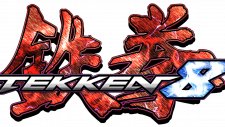Dota 2 Logo
Dota 2, a vibrant blend of strategy and action, pits two teams of five players against each other in a quest to destroy the opponent’s Ancient. Each player controls a unique hero with distinct abilities, navigating through a dynamic battlefield. The game requires skill, teamwork, and strategic acumen, as players encounter diverse challenges, including neutral creeps, enemy heroes, and powerful structures. Its ever-evolving landscape, shaped by regular updates and a rich competitive scene, ensures an engaging and fresh experience, captivating millions worldwide.
Meaning and history
Dota 2, developed by Valve Corporation, originated from the community-created mod “Defense of the Ancients” for Warcraft III. Its evolution into a standalone title in 2013 marked a significant milestone in the gaming industry, solidifying the genre of Multiplayer Online Battle Arena (MOBA). The game boasts a roster of over 100 unique heroes, each offering a diverse range of abilities and playstyles.
The objective is straightforward: two teams of five players engage in a strategic battle to destroy the opposing team’s Ancient, a colossal structure located within their base. The map is symmetrically divided, featuring three lanes connected by a jungle filled with neutral creeps. Strategic control of these lanes and jungle resources is vital for victory.
Dota 2’s intricacy lies in its depth and complexity, with a steep learning curve that rewards strategic prowess and teamwork. The game has a thriving esports scene, with tournaments like The International offering multimillion-dollar prize pools, attracting the best players worldwide and a dedicated fanbase.
Regular updates and patches keep the game fresh, introducing new heroes, items, and balancing changes, ensuring a dynamic and ever-evolving gameplay experience. The community also plays a crucial role in shaping the game, with player feedback driving improvements and adjustments. The Steam Workshop allows users to create and share custom game modes, skins, and other content, adding another layer of engagement.
In conclusion, Dota 2 has revolutionized the gaming world, creating a unique blend of strategic depth and action-packed gameplay. Its impact on the esports industry is undeniable, and it continues to captivate millions of players worldwide, standing as a testament to the power of community-driven development and the potential of the MOBA genre.
2013 – Today
The emblem of Dota 2 can be described as a cartographic representation, visually encapsulating the essence of the game’s environment. This emblem does not house any hidden connotations or secretive messages, standing solely as a representation of the game’s core components. Distinct trapezoidal forms are utilized to represent the pivotal game elements, which are then bifurcated by an elongated depiction symbolizing the river that flows through the game’s terrain.
Rather than harboring any concealed meanings or esoteric symbols, this illustration serves to display the dualistic nature of the game, illustrating the two opposing factions and the river that lies in between. Although fans have extensively explored the possibility of hidden symbols or double meanings, none have been proven or confirmed. This emblem is a completely original creation, distinct from the graphic symbol utilized by its precursor, Defense of the Ancients.
The backdrop for these game elements is a rich red square, which has led to various conjectures. Some hypothesize that it represents a piece of fabric, a sheet of paper, or even a metal slab. Furthermore, this material appears intentionally aged, featuring irregularities and frayed borders. The trapezoidal figures and the linear depiction of the river could be likened to strategically placed perforations on a robust canvas, giving the overall image a sense of depth and complexity that mirrors the intricate world of Dota 2.











